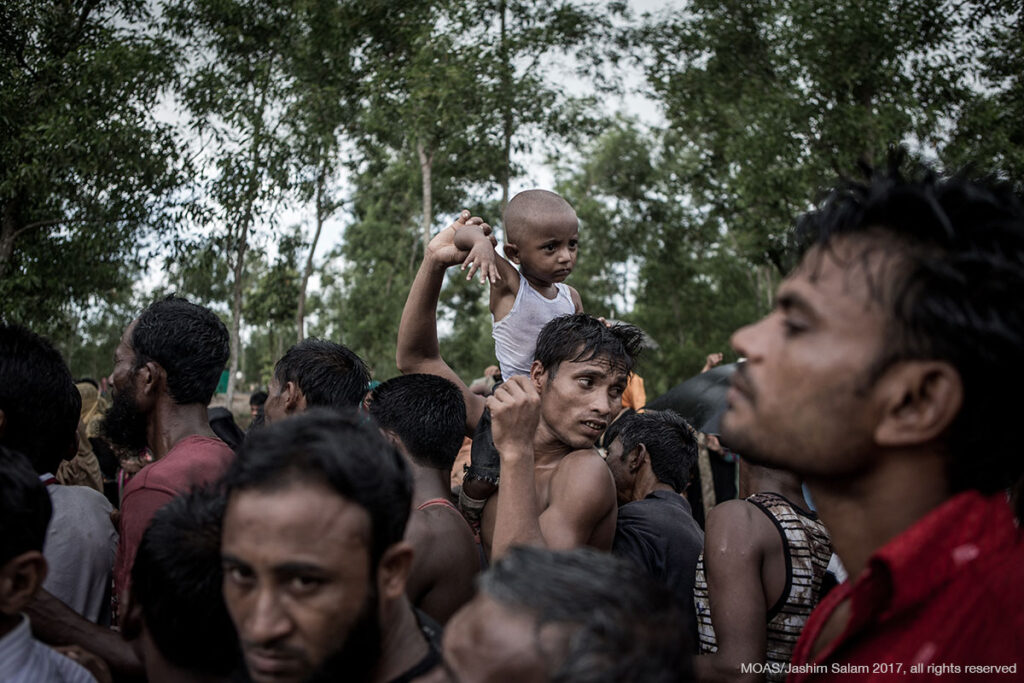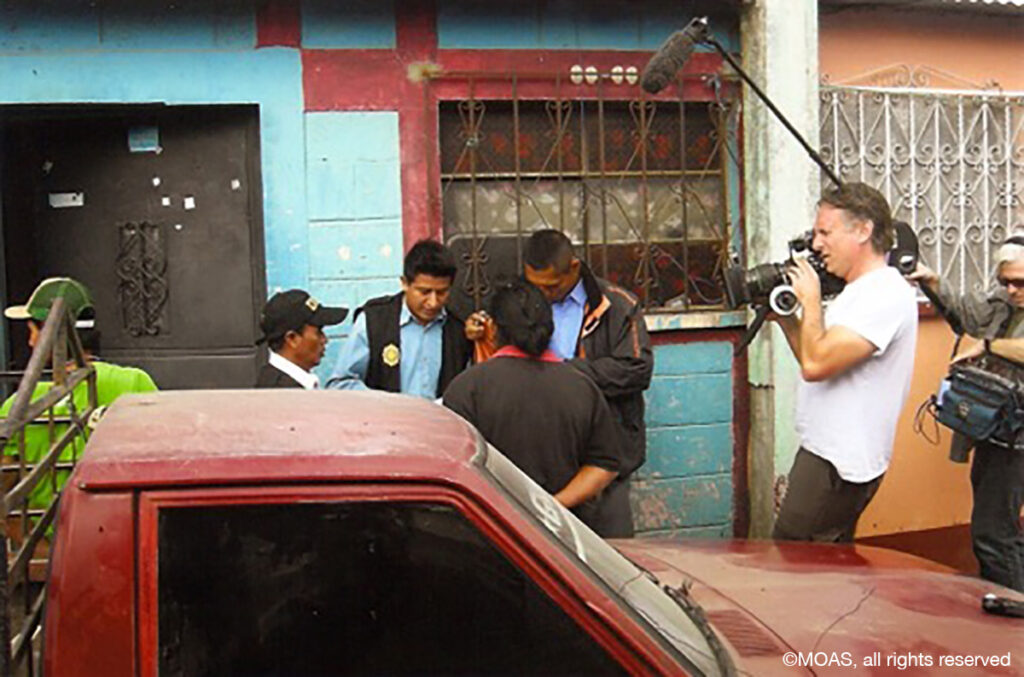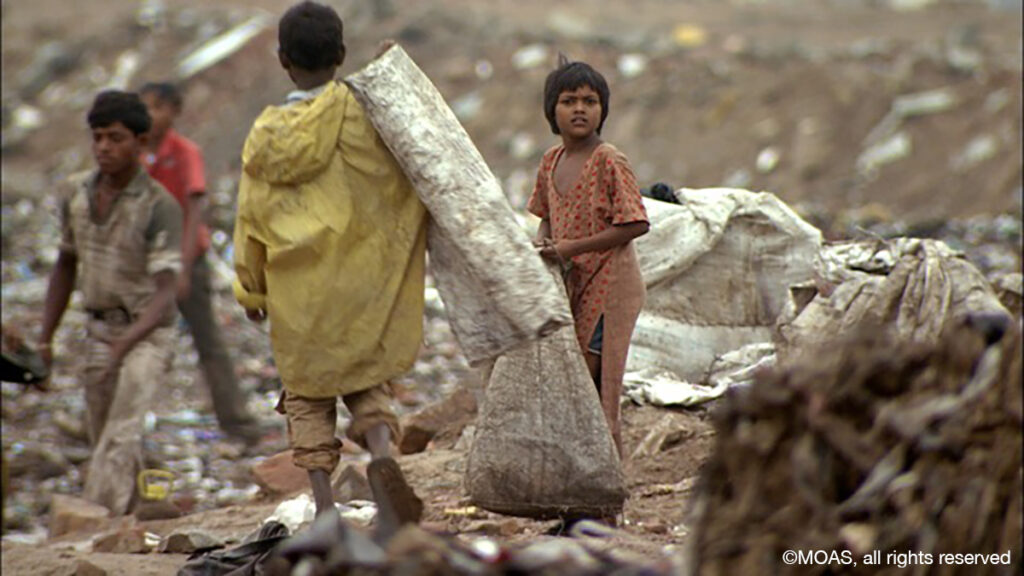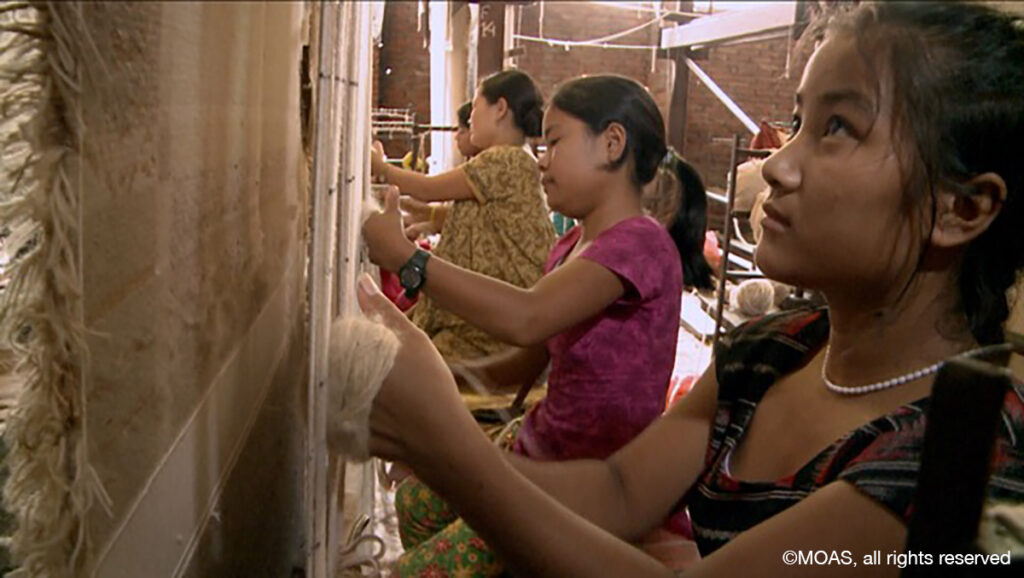Hello and welcome to MOAS…
It lurks beneath the surface, tying together organized networks across all levels of society. It exploits the weak and vulnerable, disguising slave-like jobs and sex work with promises of better prospects.
We’re talking about human trafficking, an illicit multi-billion-dollar industry operating all over the world. In this podcast we’re finding out how it affects the Rohingya, both in leaving Myanmar and in the camps.
The trafficking networks in South East Asia have existed for as long as there has been a demand for them. For the Rohingya, this started as a way for men to smuggle themselves to places like Bangladesh, Thailand or Malaysia to find work.
Decades of persecution and state violence have forced whole families, young and old, to flee Rakhine State, taking great risks in the process.
According to Sunai Phasuk, Senior Asia Researcher for Human Rights Watch, traffickers prey on desperation, employing brutal tactics to exploit and extort without accountability and they’re organised across every level.
The Rohingya are among their victims…
‘Often the trafficking of Rohingya in Rakhine State of Burma Myanmar started with the persecution, the hardship and human rights abuses that happened on the ground, people then seek to find ways to escape from the dangers, and that started to push toward criminal networks that operate as part of the trafficking rings within their livelihood.
So basically, it starts with traffickers operating inside Rakhine State of Burma Myanmar, who start to give promises to the Rohingya that they can be provided with an escape route, with ships that will bring them to safer destinations. The fee will be set out very clearly to them. Its often about 2 – 3,000 US dollars and it can be paid on the spot partly, and then with clear promises by Rohingya who want to escape, that when they finally arrive at the destination, be it Malaysia or Indonesia, the rest of the payment will be made.
But, given the fact that the Rohingya are very poor and they live in hardship and under exploitation of the Burmese authorities for many many years, it seems impossible for them to actually make such payment, so they end up in a kind of bondage agreement with the traffickers that lead them into a slave-like condition when they agree to enter into the trafficking provided by traffickers in Rakhine State of Burma Myanmar.
Then they would be transported on to the ship and then sent by sea and they will go straight to Malaysia. That’s one scenario.
Another scenario that happened in the past was that the journey from Rakhine State to Malaysia is too long, so these people are treated as merchandise. So, traffickers won’t want to risk wasting them in on rough seas. Halfway between Rakhine State of Burma Myanmar and Malaysia, you have Thailand which is a transit point.
From the big ship, they will be divided into smaller boats and carried to Thailand. When they arrive on the shore of Thailand, they are divided further into smaller groups and transported by land, across the border from Thailand to Malaysia. At each of this transit, the Rohingya are demanded to make further and further payment, otherwise they could be killed or thrown overboard. The traffickers sometimes threaten to go after the rest of the families of those who remain behind, who stay behind.
As they reach the final transit point, that is, the border between Thailand and Malaysia, they are often locked up in camps. These camps are considered modern-day slavery surrounded by armed guards. The Rohingya are not allowed to leave the camps. They have not received sufficient food, no medical treatment whatsoever. Sexual violence is very common. Women and girls have been taken out, often to be raped by traffickers and security guards in the camp. The male Rohingya are often harassed and roughed up to extort their money.
For those who fail to make the final payment, they wouldn’t be allowed to cross the border into Malaysia. That explains why we found many graves, some of them can be considered as mass graves, on the border between Thailand and Malaysia, where the camps that Rohingya are locked up are located.’
Can you explain what led up to the crackdown by the Thai authorities on the trafficking rings in 2015?
‘Even though the existence of camps, either the camps on the Thai and Malaysian border or the camps that were located on islands on the Andaman Sea, belonging to Thailand. These camps were known to human rights organisations, were known to the media and have been reported way before the crackdown in 2015. There were no reactions from authorities, from law enforcement in Thailand, partly perhaps due to the involvement of influential officials, influential politicians and criminal gangs in Thailand.
They continue to abuse and enslave the Rohingya for decades, without being touched. There were no serious investigations, no attempts to crackdown on these trafficking camps at all. For many years, the traffickers continued to operate with total impunity. The camps on the Thai-Malaysian border were left untouched, the camps on the islands were left untouched.
It was almost accidental that mass graves along the Thai-Malaysian border capture international attention when there was an unrelated attempt to go after an ethnic group from China who tried to escape through Thailand to Malaysia. The media on that day were encouraging along Thai authorities to locate Rohingya asylum seekers and migrants but they ended up stumbling into Rohingya trafficking camps.
They found a large amount of evidence of people being locked up in those camps for many years. There were graveyards near the camps. There were bodies inside those graves, bodies that show marks of people that starved to death or were beaten to death.’
Are the traffickers still operating and if so, what have we learned about their operations?
‘Due to international pressure and international attention, the Thai authorities eventually were forced to take serious action. Thailand was listed on Tier 3 of the US State Department Report on the Trafficking of Persons. That was the lowest rank. It was threatened with sanctions and something needed to be done by Thai authorities leading to a crackdown on trafficking networks inside Thailand. That led to the exposure of senior officials involved in trafficking. They were prosecuted, they were punished severely.
This was part of a huge operation that cut across many countries. The network of traffickers in Thailand has been disrupted and might not be able to return to their previous operation any time soon. But, the network of traffickers that exist inside Rakhine State Burma Myanmar, in Malaysia and in Indonesia, are still operational and active.
So, it would’ve been better to see close coordination between governments in South East Asia; Burma Myanmar, Thailand, Malaysia and Indonesia, working together to bring traffickers to justice and ensure that for the Rohingya who seek protection and a safer life and livelihood. They could travel safely and they could have access to the international protection mechanisms provided by UN agencies.’
Bangladesh is still a hotbed for Rohingya trafficking.
This year* the country was ranked on the US State Department’s Tier Two watchlist due to the government’s slow response to the scale of trafficking, both of Bangladeshis and the Rohingya population.
Since the recent influx of Rohingya to the camps of Cox’s Bazar, there’ve been more cases of refugees being trafficked into slave like work or the sex industry. It’s the promise of money or a better future for children that sounds very appealing to the vulnerable in the camps.
Robert Bilheimer is the President and Director of World Wide Documentaries, a film company focused on human rights storytelling.
He’s now working on a five-part docu-series charting human trafficking globally. Cox’s Bazar is one of his focus areas.
‘The project we’re working on now, the ‘Heart of the Matter’, is really a companion piece to ‘Not My Life’, which is a film about Human Trafficking globally and all of the crimes connected to it, how it works and who it effects and so forth.
It occurred to me two years ago when I started to become aware in my travels and when I was thinking about what to do next as a human rights storyteller that we were beginning to see this explosion of migrants and refugees on the move in all parts of the world, folks who have been forcibly displaced from their homes for any number of reasons, whether its extreme poverty, gang violence or ethnic violence as we see with the Rohingya.
I began to realise almost as an epiphany that here are 65 – 75 million people on the move and these are among some of the most vulnerable populations in the world. For someone like myself, I know how human traffickers prey on precisely the vulnerability of these mobile populations and other folks who are vulnerable; poor women, children.
It didn’t take a genius to see that this is like a toxic combination of the trafficking industry on the one hand and the vulnerability of these people on the other. I began to think what I wound up calling the Migration – Trafficking intersect. That’s how we began to develop over the last two years another global storytelling project about what this really means and how dangerous this really is.
In the 25 years I’ve been doing this work, I’ve seen anything that alarms me as much as what happens to mobile populations on the move, forcibly displaced populations at the hands of human traffickers, it’s a real tragedy and it’s getting worse.’
What links have you found between mass migration and industrialized human trafficking and slavery?
The links are self-evident it seems to me, because if you know how human traffickers operate, they fish in pools of vulnerability. What do we mean by vulnerable? Well, a vulnerable person is, a woman on the move with a daughter, because she has been forced to leave her home overnight because a gang-member in Honduras killed her son and threatening to kidnap her daughter, that’s a vulnerable person, that person on a journey from Honduras to the US/Mexican border is going to be approached by a human trafficker in some form. At the south end of the equation that trafficker will be more accurately be called a smuggler. That smuggler will exact a price of some kind for either that woman or her daughter.
We just read recently that kids trying to cross the Mediterreanean to this day, are having to pay their transportation fees by having any number of sexual relationships that a smuggler forces them into and that’s how that smuggler will profit from the vulnerability of that child who is desperately trying to get out of these circumstances.
There is a direct correlative relationship between these populations whether they’re in Cox’s Bazar, whether they’re coming from Central Africa, whether they’re coming from South America. Between their helplessness and their vulnerability and the traffickers are buzzing around them like flies. I could go on and on about what we’re seeing in the United States right now, once people do in fact get over the border. The same thing is true of the Rohingya. There are people in these camps who will say, ‘Oh I have a job for your daughter’. It’s a babysitting job or it’s some sort of domestic service. You know, that daughter will wind up being brutalized and trafficked.
So what strikes me is when you talk about industrialized slavery, when we were making, ‘Not My Life’, what struck us more than anything was how the industry itself, the human trafficking industry is very thought out, whether it’s in India or the United States, the language, the techniques, the come-ons, what they call in different languages in different parts of the world, the ‘sweet-talking’, it’s like any business where you have these models and these rules and these things that you go through.
Look, 150, 160 170 billion dollars a year on the backs and beds of children primarily: those are big numbers. You don’t arrive at numbers like that without having an industry that from top to bottom is carefully organized. It shouldn’t come as a surprise to anyone that we’re finding human traffickers among 500, 600, 700,000 vulnerable people in Cox’s Bazar who are underserved, incredibly vulnerable, no clear future.
The even more toxic thing in this case is that the Rohingya are actually feeding into the veracious human trafficking demand of India, which remains only because there are a billion people there, one of the largest human trafficking consuming countries in the world.’
In the last few months the media and aid agencies have been raising the profile of Rohingya trafficking.
Reports of Rohingya children as young as 7 years old being rescued from pimps have shown just how rooted trafficking and the sex industry are in Bangladesh.
Along with supporting victims, aid agencies like IOM are running awareness campaigns to warn families of the dangers of ‘sweet talkers’.
But, is it enough to break the Migration – Trafficking Intersect for the Rohingya?
(*The report was published this year based on findings gathered last year. The blog form of the podcast has been corrected to state this.)
If you liked this Podcast don’t forget to hit like, comment and subscribe for more Podcasts from us.
You can also follow us on our social media. Check out our latest updates on Facebook, Twitter, Instagram, Youtube and AudioBoom… or you can donate to help us help Rohingya refugees . From all of us here at MOAS: goodbye.




